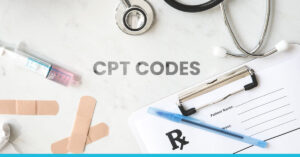A national parent survey showed that there were around 6.1 million children in the US in 2016 who were diagnosed with ADHD. Out of these, only 77% were receiving treatment in the form of behavioral therapy and/or medication. However, a large number of children in the US with ADHD still go undiagnosed. In most of these cases, their attention deficit hyperactivity disorder (ADHD) symptoms persist from childhood to adulthood.
While a lot of effort is being put into public awareness for diagnosing ADHD in children, the same cannot be said for diagnosing and treating ADHD in adults. Around 75% of adults with ADHD do not know they have the neurological disorder and are at a much greater risk for other associated health problems such as anxiety, depression, and other mood disorders.
Diagnosing a patient is the first step on their road to recovery and a better life. Until you don’t know what you’re dealing with, it’s harder to ascertain the best possible course of treatment that will help the patient reduce the extent to which their ADHD interferes in their daily activities. Once you have a diagnosis, your physician can play a key role in helping you successfully take control of your symptoms. But, how does a physician accurately diagnose a patient based on their attention deficit hyperactivity disorder ADHD symptoms? Let’s take a look.
Attention Deficit Hyperactivity Disorder (ADHD) Symptoms & Diagnosis
Attention deficit hyperactivity activity disorder is a chronic neurological condition that affects billions of children across the globe and often continues into their adulthood. It is defined by a consistent pattern of inattentiveness and/or hyperactivity-impulsivity that interferes with the affected person’s daily functioning or development.
A detailed evaluation from a licensed healthcare professional must be made before a patient can be diagnosed with ADHD. The signs and symptoms of attention deficit hyperactivity disorder can start appearing as early as the age of 3 and can continue through the child’s adolescence. Most children receive their diagnosis between the ages of 3 and 6, whereas for an adolescent or adult to be diagnosed with ADHD, their attention deficit hyperactivity disorder (ADHD) symptoms need to have been present prior to the age of 12.
Types of ADHD
ADHD is classified into three subtypes based on the different attention deficit hyperactivity disorder ADHD symptoms exhibited by a patient within a timeframe of six months.
These types are:
- Predominantly Inattentive Type – patient exhibits symptoms for inattentive type but not hyperactive/impulsive type.
- Predominantly Hyperactive/Impulsive Type – patient exhibits symptoms for hyperactive/impulsive type but not inattentive type.
- Combined Type – patient meets the criteria for both inattentive and hyperactive/impulsive type of ADHD.
Diagnostic Criteria
The DSM-V mentions the criteria for diagnosing a patient with ADHD with a detailed description of the signs and symptoms of attention deficit hyperactivity disorder based on research conducted on children between the ages of 6 and 12. According to the DSM-V, symptoms and/or behaviors have to persist in the patient for a period of at least six months in at least two different settings such as a school or at home for them to be diagnosed with ADHD. These symptoms also must have negatively disrupted the normal social, academic, and/or occupational functioning of the patient.
If the patient is 17 years old or older, the patient must exhibit at least five attention deficit hyperactivity disorder ADHD symptoms and if the patient is below 17 years of age, it is necessary that they exhibit at least six symptoms from the DSM-5 diagnostic criteria. ADHD also occurs more frequently in boys than in girls and thus the attention deficit hyperactivity disorder (ADHD) symptoms exhibited by boys may differ from those exhibited by girls. It is also important to note that these symptoms should not occur exclusively during a psychotic episode and should not exclusively be a manifestation of oppositional defiant disorder.
Inattentive Type Diagnostic Criteria
The attention deficit hyperactivity disorder (ADHD) symptoms associated with the inattentive type ADHD are:
- Poor listening skills
- The patient often loses/misplaces items
- The patient is often easily distracted by external or insignificant stimuli
- The patient forgets their daily activities
- Diminished attention span
- The patient lacks the ability to complete assignments or follow instructions
- The patient avoids beginning activities that require concentration
- The patient fails to focus on details and makes absent-minded mistakes in their assignments
Hyperactive/Impulsive Type Diagnostic Criteria
A patient who shows a pattern of hyperactive/impulsive type of ADHD may often exhibit these attention deficit hyperactivity disorder ADHD symptoms:
Hyperactive Symptoms:
- Squirms, fidgets with, or taps their hands or feet when seated
- Faces difficulty in staying under control or exhibits signs of restlessness
- Has the desire to always be in motion
- Is overly talkative or talks non-stop
- Cannot play or do any activities quietly
- Faces difficulty in staying seated
Impulsive Symptoms:
- Has difficulty waiting for their turn
- Interrupts other people’s conversations or activities
- Has the impulse to blurt out answers when asked a question without letting the questioner complete the question
Causes of ADHD
While the exact cause of ADHD is still not fully understood, research has shown that several factors may be involved in the development of the condition. The factors that can lead to ADHD in a child include genetic factors, environmental factors, or complications during crucial moments in the development of the central nervous system.
In addition to the aforementioned causes, scientists are studying a number of factors associated with an increased risk of developing ADHD. These risk factors include:
- Brain injury
- Low birth weight
- Exposure to neuro-toxins
- Drug, alcohol, or tobacco use during pregnancy
- Premature birth (before 37th week of pregnancy)
Treatment
While there is no known cure for ADHD, the right treatment plan can help a patient manage their symptoms and make the condition easier to live with. ADHD can be treated using either behavioral therapy, medication, or a combination of both depending upon the individual child and their family. During this time, the patient is closely monitored, with regular follow-ups to see if any changes need to be made along the way.
Medication is an important part of your the patient’s treatment for ADHD but seeking medical help on the right dose, benefits, and any possible side effects of the medication is important. The two main types of ADHD medications administered are:
- Stimulants: These drugs work by increasing the amount of dopamine and norepinephrine in the patient’s brain such as Adderall or Focalin.
- Non-stimulants: These drugs are prescribed when stimulants fail to work or cause adverse side effects such as Strattera or Pamelor.
In addition to medicine, different forms of therapies such as behavioral therapy or social skills training can help patients manage their problems.
Living With ADHD
When a child is diagnosed with ADHD, their parents may have several concerns about their well-being. But what is most important is for the parents to realize that their child has a head (brains, intellect and mind) that functions differently from those of the others, and which requires them to adopt different approaches to their parenting.
Raising a child with ADHD means being open to learning how to manage the behavior and the attention deficit hyperactivity disorder (ADHD) symptoms of your child. Parents should work closely with those involved in their child’s care to better understand their child’s condition. In addition to medication and behavioral therapy.
Here are a few tips for parents that can help manage the behavior of their child and make their life easier:
- Help your child plan and organize themself.
- Limit the number of choices available to your child so that they don’t feel conflicted.
- Make a routine for your child which can build structure in their life.
- Encourage healthy and nutritious eating habits. Also, encourage your child to exercise.
- Make sure your child gets enough sleep and limit the amount of screen time available to them.
- Always praise your child and reward their efforts.
Bottom Line
Additionally, patients with ADHD may also struggle with issues likelow self-esteem and poor academic performances. They might also find trouble in forming relationships and may have to deal with anxiety, stress, depression, sleep problems, and other learning disabilities.
See Also: How Federal Relief Affected Healthcare Revenues: Insights Into COVID-19 Led Losses
While treatment can’t cure a patient’s attention deficit hyperactivity disorder (ADHD) symptoms, it can certainly help the patient manage them. Getting an accurate and timely diagnosis could be what saves a life. Getting diagnosed with ADHD is good news and a step in the right direction. Life can only get better once a diagnosis is made as the person accepts their condition and becomes more open to treatment. If you think you, your child, or anyone you know is exhibiting signs and symptoms of attention deficit hyperactivity disorder, talk to a healthcare professional right away.




No comment yet, add your voice below!